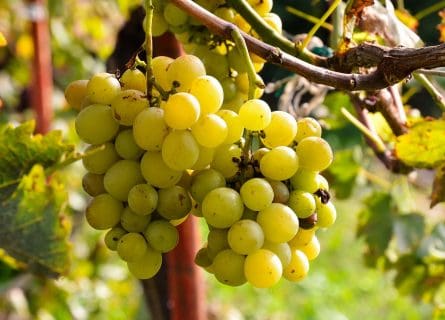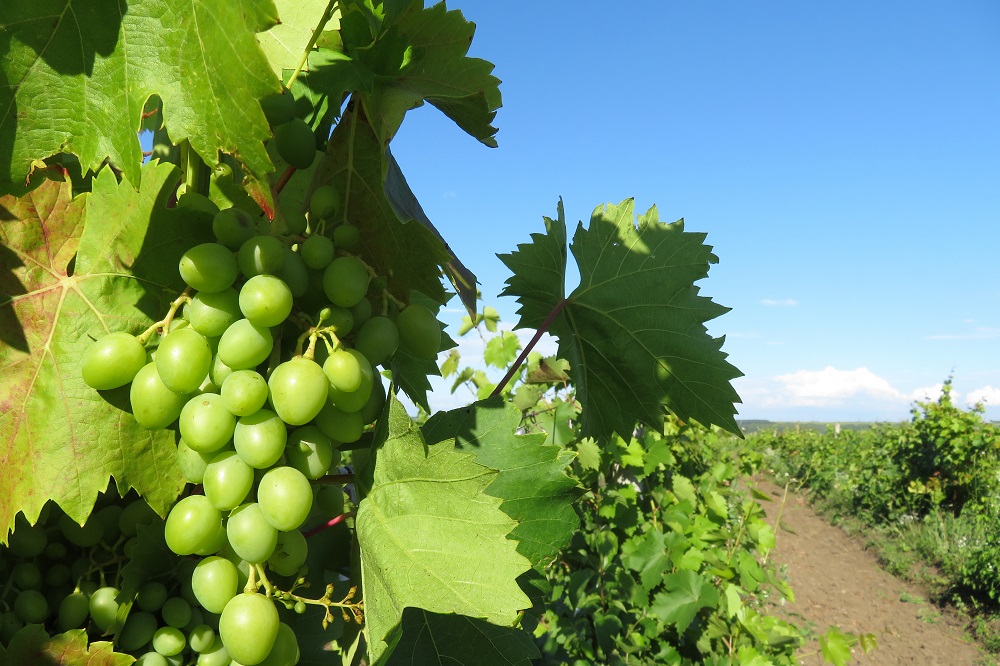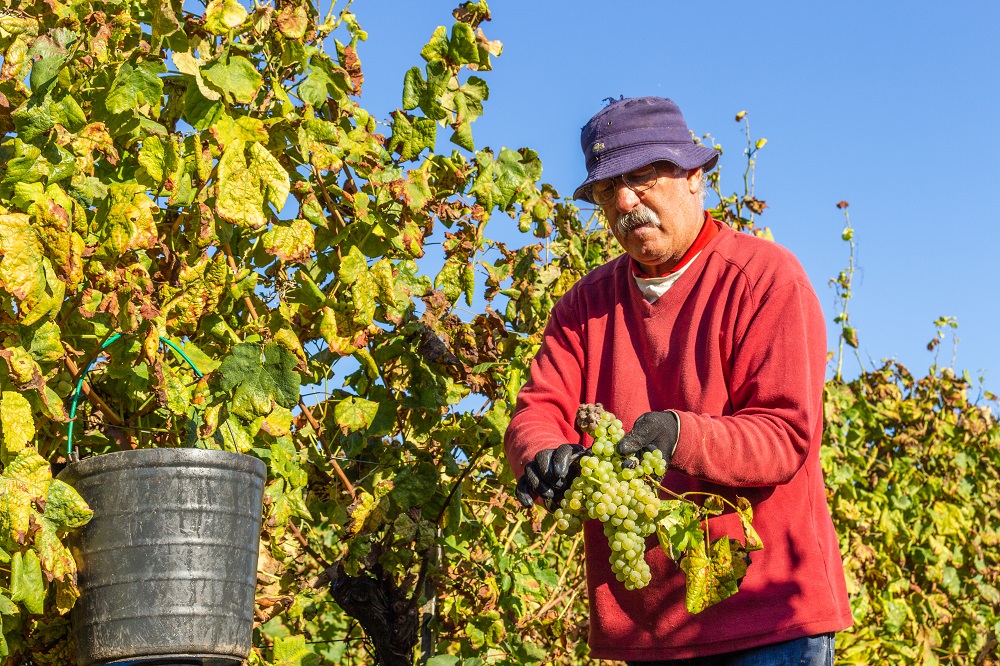
Bombino Bianco Grape Variety: A Reputation Saved
November 14, 2022
Unlocking Bombino's Secrets: From Industrial Production to Boutique Excellence. Explore the Spectrum of Italian White Wines!
By: James lawrence / Last updated: February 3, 2025
Estimated reading time: 9 minutes
Many cultural differences polarize Spanish and Portuguese winegrowers despite their close (at times, too close!) geographical proximity. For example, the Galicians have only recently started to take Trajadura – known as Treixadura across the border – seriously. In the 20th century, this obscure grape was rarely prioritized as one of the region’s key varieties. It was down to winemakers like Luis Rodriguez to jolt the Galicians out of their apathy.

Guide to Portuguese White Wine: Read more
Yet the Portuguese have never regarded Trajadura as second-rate. On the contrary, it has been blended with Loureiro, Arinto, and Alvarinho for centuries, grown in the verdant hills that flank the Minho River. Its primary role is to bolster the perfume and weight of impeccably fresh and crisp Vinho Verde – white Vinho Verde, to be exact. If you’ve never tried any, then you must! It can refresh the palate like no other wine style. In summer, there is nothing quite like it.
Portugal’s historical isolation, cut off behind Spain on the Atlantic fringe of Europe, has endowed the country with a rich palate of autochthonous grape varieties – the habit of planting acres of Merlot and Sauvignon Blanc has never taken off here! Yet even isolated Portugal could not hold out against the onslaught of the well-organized Roman armies, who started to conquer the Iberian Peninsula in the 3rd Century BC. Subjugating Spain and Portugal, the Romans eventually arrived in the Minho region in 136 BC. They established a base in northern Portugal, Bracara, today known as Braga. It was one of the Roman Empire’s less famous outposts but a prosperous one. Moreover, there is evidence that viticulture had been established in the Minho by the turn of the millennium: Seneca the Younger and Pliny the Elder both extolled the virtues of Minho wines in their writings.
However, after the Western Roman Empire collapsed in 476 AD, instability reigned for centuries; once thriving settlements like Bracara teetered on the edge of an abyss. Indeed, Europe had no shortage of rival civilizations, desperate to appropriate the Romans’ former territories. One leading contender was the Suebi, a central European race that conquered much of Galicia, Asturias, and the Minho. Naming this strategic prize ‘Galeicia,’ they were eventually driven out of northern Portugal and Spain by the Visigothic king Theodoric III. By 584, the vineyards of the Minho were in his hands.
Nevertheless, the Visigoths did not have too long to enjoy their newfound power base; the Muslim invasion of Spain, led by Tariq in 711, changed the face of the peninsula. Yet the rebellions started relatively soon after the Moors had tightened their grip, led by forces in the north. The Minho region was among the first to rebel, inspired by Alfonso III of Asturias. His armies retook Braga from the Moors in the 8th century – Alfonso subsequently passed stewardship of this vast territory to his son Ordono of Galicia. As a result, winegrowing started to prosper again, although its new stakeholders had a radically different set of priorities to the Romans. An example of this cultural shift can be seen in the records of the Alpendurada convent in the city of Marco de Canaveses.
In 870, the winery was given to the monks at the convent and used to produce wine for their holy order. Yet, due to the generous tax breaks afforded by the monarchy, this soon turned into a thriving business in its own right. By the 1100s, the wines of the Minho were being exported to northern Europe, particularly England, Flanders, and Germany. The reconquest of the peninsula, meanwhile, was gathering serious momentum. In 1139, Afonso Henriques granted the kingdom of Portucale independence after a great swathe of territory was recovered from the Moors. In under ten years, Lisbon was liberated, followed by the Algarve. Portugal had turned a corner.
In the 15th century, Portuguese explorers, the most famous being Vasco de Gama, established new dominions in Brazil and India. Much wealth flowed into the coffers of the Portuguese monarch, although the agricultural community of the Minho was relatively unaffected by this new Atlantic trade. However, there is a key exception: the introduction of corn, a life-changing import from the New World, dramatically impacted local viticulture.
Many farmers decided to refocus their efforts on growing this lucrative crop, while new agricultural laws banished vines from the fields of the Minho. As a result, growers who remained loyal to the grape were forced to train vines up hedge rows and allow them to climb trees. Nevertheless, wine exports continued to flow from the Minho into northern Europe; John Croft, the founder of that eponymous Port Lodge, recorded in his writings that wine was being shipped to great profit from the Minho in the 18th century.
Unfortunately, the 1800s was not a good period for the winegrowers and farmers of northern Portugal. Napoleon’s armies encountered relatively little resistance as they claimed the city of Braga in 1809, while the rest of the Minho region was basically abandoned. The loss of Brazil was, of course, another major blow to this once proud nation. Against this backdrop of growing poverty and helplessness, it is little surprise that the dictator Antonio Salazar was able to seize power in 1928 and promise the citizens of Portugal a brighter future.
That future, however, did not really start to materialize until the return to democracy in the 1970s. Since then, investment has poured into the nation’s key wine zones, while ambitious infrastructure projects have revolutionized travel between Lisbon and northern Portugal. This enabled growers in the Minho to access markets in western Europe more easily and, indeed, the capital. However, the recipe for producing white Vinho Verde has not altered much over the past century, save for improvements in vinification techniques made possible by modern technology.
Nevertheless, Trajadura has long played a vital role in the blend, cultivated in prime spots along the river valley. Although relatively easy to grow, the variety delivers an inflated yield unless the vines are meticulously pruned throughout the season. The only other issue concerns acidity: in warmer years, it is essential not to leave the berries for too long on the vine. Under such circumstances, Trajadura can lose its lovely crunchy acidity fairly quickly. Fortunately, you can trust most growers to keep a watchful eye on their crops at all times.
Crisp and saline Vinho Verde – red and white – is not a wine style that (generally) lends itself to oak fermentation and/or maturation. Therefore, how Trajadura is handled in the great cellars of the Minho does not vary much. And so, from one perspective, the making of white Vinho Verde is exceedingly simple: crush the berries, press the berries, clarify the juice, and ferment in an assortment of stainless steel, concrete, or old wooden vats. A small amount of carbon dioxide is often added before bottling to give the wine its signature refreshing spritz. But overall, there is no oak, artifice, or sophistication.
Yet the above can give a false impression. Although Vinho Verde rarely, if ever, involves the expense of new oak barrels, the grapes are treated very sensitively in the winery, protected at all stages from oxidation. New high-tech crushers, meanwhile, give the winemaker many choices, enabling greater control of the must. Sulfur dioxide is always used judiciously in the Minho, added at the crusher, press, or as the juice is transferred into the settling tank. All these stages, as vital as the last, help the grower to market an extremely crisp, fruity style of white. Oaky flavors and the funky notes flow from skin contact/unprotected handling do not suit Vinho Verde.
The traditional Vinho Verde white was a tart mouthful of fermented grape juice: refreshing, without a doubt, and yet somewhat aggressive on the mid-palate. Hence, its moniker Vinho Verde (green) was an apt description for this under-ripe expression of the local grapes. Then again, when you consider the damp climate of the Minho, in addition to the vine’s natural vigor, it is no wonder that sugar ripeness never historically got that high. 11% alcohol would have been considered a major success in the 1980s!

However, better viticulture, combined with climate change – the trend for warmer summers lately – has resulted in a more palatable, riper style of Vinho Verde. Yet many qualities that made this Portuguese institution so popular have remained. If you’ve never sampled a glass of Vinho Verde and have reservations, the following will hopefully change your mind.
1.) It has never been better
Yes, the days of astringent dross are over. Better winemaking, viticultural management, and the realities of a warming planet have improved the drinking experience immeasurably since the 20th century. Today, the best white Vinho Verde can compete with the finest whites of Galicia, including the superlative Albarino of Rias Baixas.
2.) It offers moderate alcohol
The trend for moderation and healthier lifestyles is gathering speed: a raft of new low- and non-alcoholic beverages are poised to be released in 2023. So, from that perspective, Vinho Verde should be the wine of the zeitgeist. Even in warmer years, alcohol seldom rises above 12%. It is an (almost) guilt-free indulgence.
3.) It offers unrivaled summer refreshment
Let’s be honest: many regions currently produce a crisp and racy style of white. But there is something about Vinho Verde that sets it apart. The acid line is unbelievably moreish and mouthwatering – even when it is benchmarked against Riesling! The truth is that nothing else can refresh your palate with the same intensity when the sun shines.
4.) It is very affordable
Good Vinho Verde is a premium wine style that doesn’t cost the earth. It offers astonishing value. The reason? There is a plentiful supply, and the market wouldn’t tolerate any excessive price hikes – we’re not talking about Montrachet, after all.
5.) It’s fantastically food-friendly
Vinho Verde is a brilliant aperitif; however, it can also handle various dishes and flavors, not least the exquisite shellfish that constitute a major part of the local diet. It reaches an apogee when served alongside bacalhau (salt cod) stew.
If you would like us to customize an exclusive luxury tour, contact us and let us know your travel plans. We offer luxury food and wine tours for private groups of a minimum two guests. In addition, all of our private, chauffeured tours are available year-round upon request.

